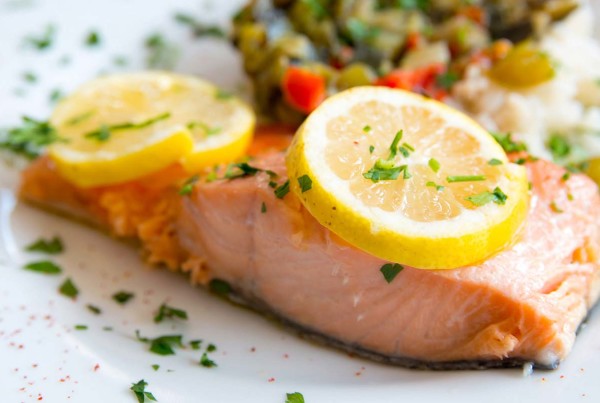
Getting and staying healthy is the real key to reaching your training and racing goals — and getting faster.
Most competitive runners have at least three goals that include better training, more racing and getting faster. This “trifecta” may be seem like the holy grail, but those who train their body to use more fat as fuel can reach these as well as another important goal — improved health.
Conversely, training harder and farther won’t usually produce the desired results without risk of overtraining, and resulting ill health and injury.
Staying healthy is actually a more effective strategy to achieve running goals than pushing the training envelope. The benefits include no injuries or fatigue, less chance of illness, and more consistent training. What’s more, there’s no catch. It’s legal. You don’t have have to move to a high mountain, quit your job or even spend more money.
All this can be achieved simply by increasing the amount of energy to the muscles. Sounds simple enough. Here’s how it works.
Whether sleeping, working or running a marathon, the human metabolism relies on ATP for energy. The muscles obtain this fuel from two sources:
- Fat stored in adipose tissue (known as body fat) and small amounts of fat (triglycerides) in muscles.
- Sugar in the form of glucose, which is stored as glycogen, with blood sugar also available, along with lactate which is converted to glucose.
Fat is the most important source of endurance energy and an important part of our metabolism. Even the leanest runner, for example, has enough stored fat to run hundreds of miles at an easy pace. When racing, such as a 5K or 10K, and particularly longer distances such as a marathon, runners, with the right metabolism, can burn significant amounts of fat for energy, conserving sugar for a final kick.
By burning more body fat, all runners will attain better endurance, are generally faster, remain lean and are overall healthier with less injuries and illness.
Sugar is very important too. Even when glycogen stores are full; however, it is quite limited (to a couple of minutes of running). Sugar is used in particular for very short quick paces such as when you’re trying to catch the runner ahead as the finish line approaches. Using up glycogen stores too quickly, like going out too fast in a race, reduces energy, decreases overall running pace and is a recipe for bonking.
The precise mix of fuels varies from one runner to the next, and is based on types of food eaten, especially the previous meal or snack, as well as training pace and stress levels. Here is an overview:
- Food. Food has an immediate and powerful effect on the mix of fuels. The more carbohydrate consumed, especially refined products (the kind most people eat), the less fat and more sugar we burn for energy. This is especially a problem when consuming carbs before a workout or race, and even the previous evening’s meal. Even moderate amounts of carbohydrates can reduce fat-burning in many runners. One can even consume too many natural carbohydrates, such as fruit.
- Training Pace. Fat-burning occurs in the slow-twitch, aerobic muscle fibers. Developing these muscles during lower rather than higher intensity running helps build better endurance and fat-burning, and can contribute to better race times. Once aerobic function is developed, which could take three to six months, one can add intervals or other higher-intensity training. Not surprisingly, many runners perform their best while maintaining a strictly aerobic-base training program. An option is to add more racing to your calendar for more high-intensity efforts.
- Stress. The accumulation of physical, biochemical and mental-emotional stress, if excessive, can impair fat-burning and force the body to use more sugar.
There are various indications the body may not be burning enough fat and relying too much on sugar. These include:
- Frequent hunger. Burning more fat for energy conserves sugar throughout the day and night, not just when running. Frequent hunger usually means inadequate energy, with associated complaints that include fatigue, poor sleep, and strong cravings for sugar and carbohydrates.
- Increased body fat. When the metabolism burns less fat for energy, more of it is stored. Waist size is a good indicator of body fat content, better than scale weight.
- Performance plateau. Many runners progress well in the early stages of training and racing only to reach a premature plateau without attaining their human potential. This is often related to a deficiency in the aerobic system. The primary component of a great race is to fully develop the body’s ability to use fat as fuel.
- Increased disease risk. Diabetes, pre-diabetes, high blood pressure, increased blood fats, and other health dilemmas are often indications of poor fat-burning and excess carbohydrate consumption.
- Calorie confusion is also common. Many runners mistakenly believe burning more calories with more and faster miles will help slim them down. This obviously is not true as many frustrated high-mileage athletes can’t shed the extra body fat. Here’s an important question that helps solve the confusion: Which calories are you burning during training? Burning more sugar calories by running longer and faster won’t necessarily burn off excess body fat.What to do:
- Eliminate refined carbohydrates, and reduce natural ones, to best match your needs (use hunger, training energy and other indicators as a guide). Reducing carbohydrates means adding more natural fats to the diet. Coconut oil, avocados, butter, nuts and seeds and others can actually help burn more body fat.
- Use a heart-rate monitor to keep your training intensity lower in order to improve fat-burning. By doing so over time you will develop the ability to actually run faster at the lower heart rate, which translates into racing faster.
- Reduce any stress factors that can be easily identified and corrected.








